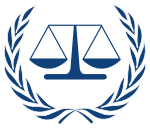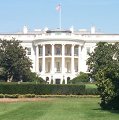Government Grants
Business Grants
Home Owner Programs
Federal Programs
About Us
Annual Program Statement (APS)
This is an Annual Program Statement, outlining funding priorities, strategic themes, and the procedures for submitting requests for funding.
Please carefully follow all instructions below.Funding Instrument Type:
Grant, fixed amount award (FAA), or cooperative agreement.
Cooperative agreements and some FAAs are different from grants in that bureau/embassy staff are more actively involved in the grant implementation (“Substantial Involvement”).Program Performance Period:
Proposed projects should be completed in 18 months or less.
The Department of State will entertain applications for continuation grants funded under these awards beyond the initial budget period on a non-competitive basis subject to availability of funds, satisfactory progress of the program, and a determination that continued funding would be in the best interest of the U. S. Department of State.This notice is subject to availability of funding.Executive Summary:Region:
CanadaThe U. S. Mission to Canada is pleased to announce the opportunity to apply for funding through its Public Diplomacy Grants Program.
This Annual Program Statement outlines funding priorities, strategic themes, and procedures for submitting proposals.
The program seeks to strengthen ties between the United States and Canada through initiatives that foster bilateral cooperation and mutual understanding.
All proposals must include an American element, such as engagement with American experts, organizations, or institutions, to promote Canadian audiences’ increased understanding of U. S. policy and perspectives.We invite proposals that align with the U. S. Mission to Canada goals and objectives outlined in the program areas below from eligible academic, cultural, educational, and other non-profit organizations and/or individuals.We will evaluate those proposals that focus exclusively on the development of one or more of the following program areas, under the principles of making America and the American people safer, stronger, and more prosperous and/or celebrating American excellence.Goals and Objectives:We seek innovative public diplomacy initiatives that showcase American expertise and U.S.-Canada cooperation across past, present, and future contexts.
Programs should emphasize shared U.S.-Canada interests, achievements, and opportunities while addressing strategic priorities such as innovation, defense and security, border security, and the commemoration of America25 0. Programs must align with U. S. administration priorities by contributing to efforts that make America safer, stronger, and more prosperous.Programs should enhance U. S. Mission to Canada’s relationships with opinion leaders, policymakers, and other stakeholders to deepen bilateral cooperation and increase Canadian understanding of and support for U. S. policy, culture, and/or history.
They also should foster cross-border connections, facilitate knowledge-sharing, and/or empower the next generation of leaders to build safer, stronger, and more prosperous communities.Examples of grants program projects include, but are not limited to:• Academic and professional lectures, seminars, and speaker programs.• Artistic and cultural workshops, joint performances, and exhibitions.• Professional and academic exchanges and projects.• Professional development workshops.Priority Program Areas:• Innovation and Emerging Technologies; Activities that strengthen U.S.-Canada collaboration in critical emerging technology fields, such as artificial intelligence, energy, cybersecurity, STEM programs, and space exploration, including initiatives like Artemis II.
Examples of potential programs include educational workshops, hackathons, public awareness campaigns, or technology showcases that advance shared goals and inspire future innovators.• Security and Defense; Activities that build public support for U.S.-Canada collaboration related to shared national security challenges, including but not limited to NATO commitments, NORAD modernization, countering adversarial actors, and cybersecurity, including in Canada’s Arctic.
Examples of potential programs could include public forums on the importance of NATO and NORAD, educational campaigns on Arctic security and resource issues, cybersecurity workshops, or activities that demonstrate the strength of U.S.-Canada defense cooperation.
These examples are illustrative and not exhaustive, allowing for creative approaches that align with the program’s objectives.• Secure the Northern Border; Activities that support U.S.-Canada collaboration in countering the flow of fentanyl and eliminating trafficking.
Examples of potential programs could include public awareness campaigns to educate communities on the realities of fentanyl and human trafficking, outreach initiatives that promote cross-border cooperation and understanding, speaker series featuring experts on trafficking issues, or cultural programs that foster dialogue and collaboration on shared border challenges.• Commemorate America250; Activities that celebrate the enduring U.S.-Canada partnership in the context of America’s 250th anniversary.
Programs should honor the past while fostering dialogue on democracy, innovation, and shared values.
Proposals must align with the national America250 commemoration and highlight the unique bilateral relationship.
Examples may include exhibitions, cultural performances, or academic conferences exploring shared history and achievements.• Reinforcing Networks; Activities that enhance U.S.-Canada collaboration on U. S. policy goals by building and sustaining educational, cultural, and professional networks.
Programs could include initiatives that leverage major international events, such as the FIFA World Cup 2026, to showcase U.S.-Canada collaboration, foster cross-border partnerships, and highlight joint achievements in areas such as sports, culture, and innovation.
Programs should foster meaningful connections between Americans and Canadians and include as participants and/or audiences future leaders through collaborative research, exchanges, and professional development opportunities.For more information, eligibility, and deadlines please read the Annual Program Statement :
PD-FY25-CANADA-APS in related documents tab.
Please carefully follow all instructions below.Funding Instrument Type:
Grant, fixed amount award (FAA), or cooperative agreement.
Cooperative agreements and some FAAs are different from grants in that bureau/embassy staff are more actively involved in the grant implementation (“Substantial Involvement”).Program Performance Period:
Proposed projects should be completed in 18 months or less.
The Department of State will entertain applications for continuation grants funded under these awards beyond the initial budget period on a non-competitive basis subject to availability of funds, satisfactory progress of the program, and a determination that continued funding would be in the best interest of the U. S. Department of State.This notice is subject to availability of funding.Executive Summary:Region:
CanadaThe U. S. Mission to Canada is pleased to announce the opportunity to apply for funding through its Public Diplomacy Grants Program.
This Annual Program Statement outlines funding priorities, strategic themes, and procedures for submitting proposals.
The program seeks to strengthen ties between the United States and Canada through initiatives that foster bilateral cooperation and mutual understanding.
All proposals must include an American element, such as engagement with American experts, organizations, or institutions, to promote Canadian audiences’ increased understanding of U. S. policy and perspectives.We invite proposals that align with the U. S. Mission to Canada goals and objectives outlined in the program areas below from eligible academic, cultural, educational, and other non-profit organizations and/or individuals.We will evaluate those proposals that focus exclusively on the development of one or more of the following program areas, under the principles of making America and the American people safer, stronger, and more prosperous and/or celebrating American excellence.Goals and Objectives:We seek innovative public diplomacy initiatives that showcase American expertise and U.S.-Canada cooperation across past, present, and future contexts.
Programs should emphasize shared U.S.-Canada interests, achievements, and opportunities while addressing strategic priorities such as innovation, defense and security, border security, and the commemoration of America25 0. Programs must align with U. S. administration priorities by contributing to efforts that make America safer, stronger, and more prosperous.Programs should enhance U. S. Mission to Canada’s relationships with opinion leaders, policymakers, and other stakeholders to deepen bilateral cooperation and increase Canadian understanding of and support for U. S. policy, culture, and/or history.
They also should foster cross-border connections, facilitate knowledge-sharing, and/or empower the next generation of leaders to build safer, stronger, and more prosperous communities.Examples of grants program projects include, but are not limited to:• Academic and professional lectures, seminars, and speaker programs.• Artistic and cultural workshops, joint performances, and exhibitions.• Professional and academic exchanges and projects.• Professional development workshops.Priority Program Areas:• Innovation and Emerging Technologies; Activities that strengthen U.S.-Canada collaboration in critical emerging technology fields, such as artificial intelligence, energy, cybersecurity, STEM programs, and space exploration, including initiatives like Artemis II.
Examples of potential programs include educational workshops, hackathons, public awareness campaigns, or technology showcases that advance shared goals and inspire future innovators.• Security and Defense; Activities that build public support for U.S.-Canada collaboration related to shared national security challenges, including but not limited to NATO commitments, NORAD modernization, countering adversarial actors, and cybersecurity, including in Canada’s Arctic.
Examples of potential programs could include public forums on the importance of NATO and NORAD, educational campaigns on Arctic security and resource issues, cybersecurity workshops, or activities that demonstrate the strength of U.S.-Canada defense cooperation.
These examples are illustrative and not exhaustive, allowing for creative approaches that align with the program’s objectives.• Secure the Northern Border; Activities that support U.S.-Canada collaboration in countering the flow of fentanyl and eliminating trafficking.
Examples of potential programs could include public awareness campaigns to educate communities on the realities of fentanyl and human trafficking, outreach initiatives that promote cross-border cooperation and understanding, speaker series featuring experts on trafficking issues, or cultural programs that foster dialogue and collaboration on shared border challenges.• Commemorate America250; Activities that celebrate the enduring U.S.-Canada partnership in the context of America’s 250th anniversary.
Programs should honor the past while fostering dialogue on democracy, innovation, and shared values.
Proposals must align with the national America250 commemoration and highlight the unique bilateral relationship.
Examples may include exhibitions, cultural performances, or academic conferences exploring shared history and achievements.• Reinforcing Networks; Activities that enhance U.S.-Canada collaboration on U. S. policy goals by building and sustaining educational, cultural, and professional networks.
Programs could include initiatives that leverage major international events, such as the FIFA World Cup 2026, to showcase U.S.-Canada collaboration, foster cross-border partnerships, and highlight joint achievements in areas such as sports, culture, and innovation.
Programs should foster meaningful connections between Americans and Canadians and include as participants and/or audiences future leaders through collaborative research, exchanges, and professional development opportunities.For more information, eligibility, and deadlines please read the Annual Program Statement :
PD-FY25-CANADA-APS in related documents tab.
Relevant Nonprofit Program Categories
Obtain Full Opportunity Text:
NSF Publication 25-541
Additional Information of Eligibility:
The following organizations based either in the United States or in Canada are eligible to apply:• Not-for-profit organizations, including think tanks and civil society/non-governmental organizations• Public and private educational institutions• Individuals
Full Opportunity Web Address:
http://www.nsf.gov/publications/pub_summ.jsp?ods_key=nsf25541
Contact:
Agency Email Description:
Public Diplomacy Section
Agency Email:
Date Posted:
2025-07-16
Application Due Date:
Archive Date:
2025-09-19
Social Entrepreneurship
Spotlight
When it Comes to Social Enterprises, Failure is the Best Platform for Innovation

In the world of social enterprises, failure is a cringe-worthy moment nobody wants to talk about. But, social entrepreneurs can benefit from their failures.

